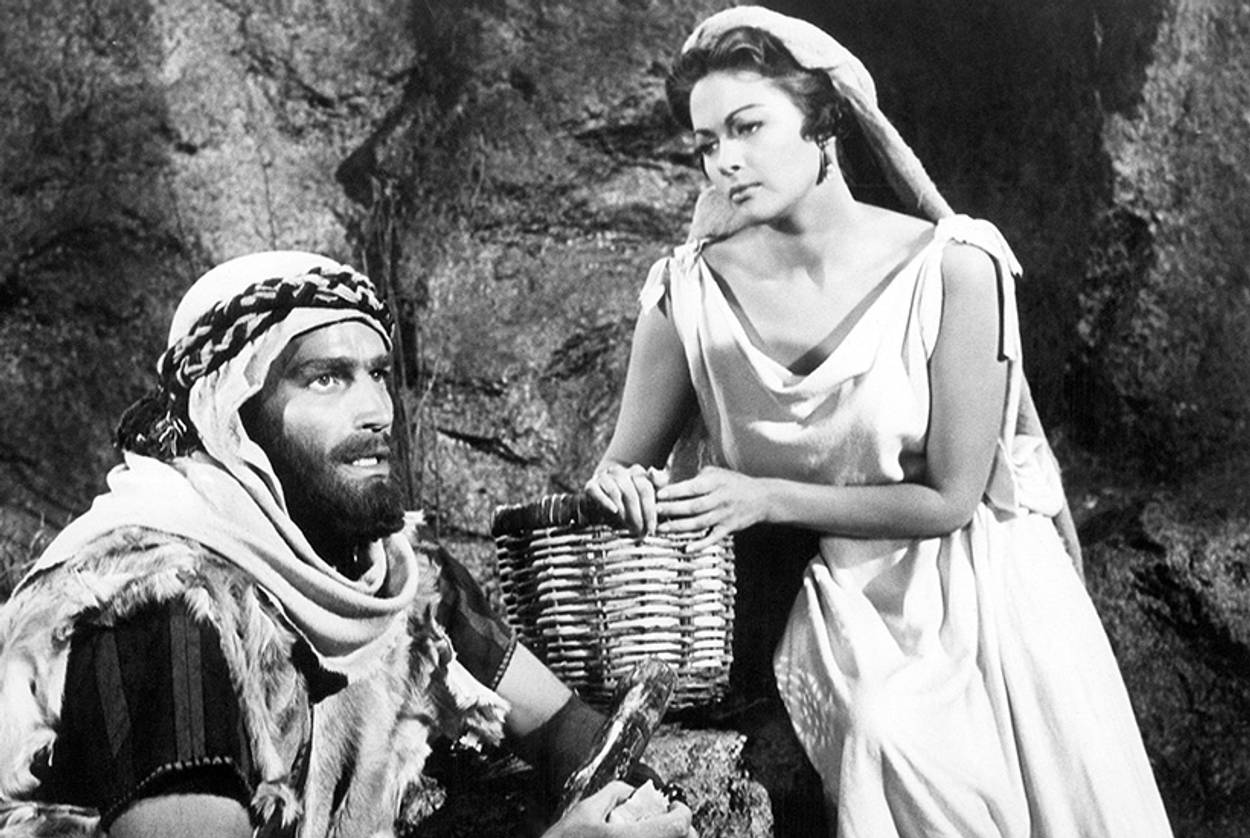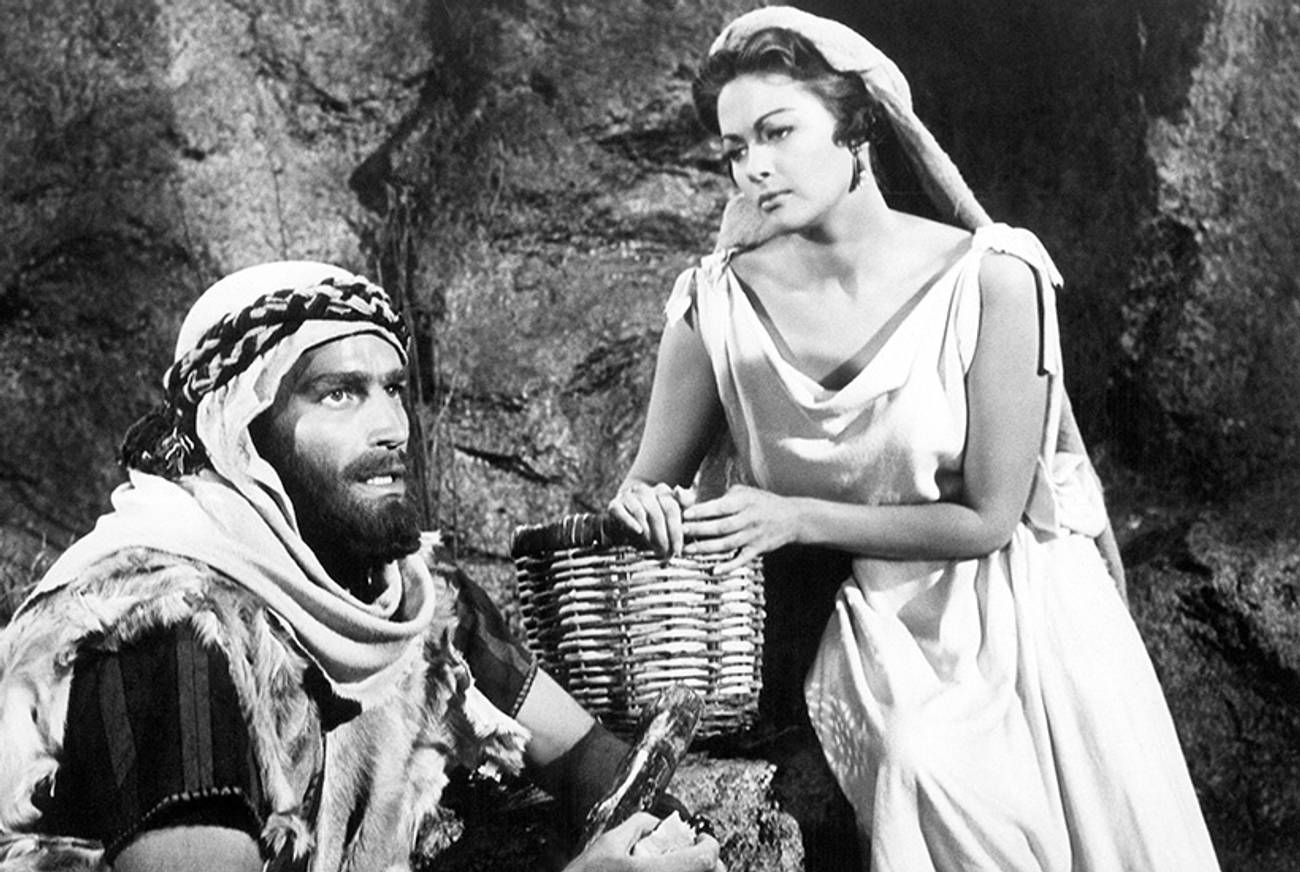Did Moses Intermarry? Who Says He Did—and Why Do They Want To Know?
Some Reform leaders see Moses as a model to ease modern tensions. But such a reading of the Torah is strained—and risky.




Moses’ marriage has become the subject of much speculation in Reform circles recently. The websites of some of the most prominent outreach organizations in Jewish life, such as the Jewish Outreach Institute, Interfaith Family, and the Union for Reform Judaism all feature pieces about the putatively successful “intermarriage” between Moses and Tziporah.
Take the Union for Reform Judaism website. Here we read: “The Moses-[Tziporah] relationship is the biblical prototype for many interfaith families in our community. … Our community has been enriched by the countless individuals who, never having grown up Jewish, nonetheless have actively engaged in our community and, in their own way, help to ensure a vibrant future for our children and grandchildren.” To take another example, a Reform congregation in Calabasas, Calif., identifies itself by saying: “We are also ‘Mosaic’ in that we connect back to Moses, a Hebrew child, raised by Egyptians, who married a non-Jewish woman of color and became the leader of his people.”
All these institutions and thought-leaders are making a strained argument—to say the least—to present Moses as a case of a successful “intermarried Jew.” Never mind that, in Moses’ time, no conversion ritual was yet developed. Never mind that the biblical period is filled with examples in which women’s identity automatically changed as a result of marriage. Of course, any comparisons between our biblical ancestors and our own reality are filled with anachronisms. Yet only a forced reading of the marriage of Moses and Tziporah could see it as the equivalent of contemporary intermarriage. And such a fanciful reading leads to conclusions that are not only counterintuitive, but also contrary both to our inherited tradition and to our future group survival.
What are Reform Jews and others to learn from this agenda-driven reading of the Torah? When Reform rabbis (and others) hold up Moses as an example of an intermarried Jew, we elevate intermarriage from an ever-present reality to a desirable ideal. Are we to learn that Judaism no longer teaches that in-marriage is preferred, both as an inherent fulfillment of Jewish teaching and as a surer path to a life of Jewish engagement? At a time when the Pew Research Center reports that among “non-Orthodox Jews who have gotten married since 2000 … fully 72 percent are intermarried,” are rabbis—and committed Jewish parents—now being asked to teach our children that whom one marries has absolutely no consequence for one’s Jewish future?
***
If Moses’ marriage was indeed an “intermarriage,” then Tziporah was without parallel as a non-Jewish spouse. For, in Moses’ absence, she took it upon herself to circumcise their son (Exodus 4:25), symbolizing her commitment to Jewish continuity and her fealty to Jewish custom. In this respect, Tziporah was also exceptional. According to the Pew study, fully 96 percent of in-married Jews raise their children in the Jewish religion, but just 20 percent of the intermarried couples do so, and their levels of ritual observance fall far below that normally practiced in in-married homes. Perhaps the text is teaching a valuable lesson for our times: In the event that a Jew marries someone from another faith tradition, the non-Jewish spouse is expected to act like Tziporah—to join the Jewish people and raise the children as Jews. For not only was Tziporah committed to Judaism, she took care to punctiliously observe Jewish ritual practices, even when her husband was away from the family.
Parents strive with two often-conflicting impulses. On the one hand, they try to present a model of unconditional love: “No matter what you do, you’re still part of our family, and I will always love you.” On the other, they seek to convey a clear sense of right and wrong, of what meets with approval.
Religious leaders struggle with a similar dilemma, one that is particularly heightened when so many of the members of their communities make choices that run contrary to deeply held values of their faith traditions or denominational movements. Reform Judaism struggles with articulating ideals and standards on many fronts for fear of alienating those who do not—or are not able to—fulfill those ideals. The language we now see in the Reform movement regarding interfaith marriage reveals a discomfort and reluctance to normatively privilege in-marriage as the preferred, if not highly desirable, choice. For Reform Judaism at a time of widespread intermarriage, the delicate dance between boundless welcoming and normative boundaries is turning out to be far more challenging than at any time in its history.
Indeed, the challenges are enormous, almost daunting. As noted, the intermarriage rates for American Jews outside Orthodoxy now exceed 70 percent. Among the children of the intermarried—including those who identify as Jewish as well as those who don’t—over 90 percent marry non-Jews! In contrast, almost all children of two Jewish parents grow up to think of themselves as Jews. In light of these trends, Reform leaders are asking: Can the Reform movement serve as a warmly accepting tent for all who seek to enter, while simultaneously maintaining a commitment to ideal and desirable Jewish choices?
The question is not at all new. In 1978, when the late Rabbi Alexander M. Schindler launched the Reform movement’s ambitious and visionary outreach program, he articulated an approach that speaks to us even more compellingly today. In his highly acclaimed speech, Schindler declared, “We are opposed to intermarriage, but we cannot reject the intermarried.”
Over three decades later, some Reform leaders seem confused over whether it is even possible, or wise, to maintain that the normative ideal is Jewish endogamy (in-marriage), or, to put matters simply: Jews should marry Jews. Reform rabbinical students—some of whom were raised by mixed-married parents—are pushing for HUC-JIR, the Reform seminary, to abandon its long-standing policy of neither accepting nor ordaining intermarried students. They argue that marriage is entirely a personal choice, and how a rabbi shapes his or her family is irrelevant to sacred Jewish leadership. Moreover, they argue, with so many Jews intermarrying, would not some of their number serve them as ideal Jewish role models, as people who combine marriage to non-Jews with engagement in Torah, Judaism, and the Jewish People?
Over the years, the discourse in the Reform movement has shifted considerably. Once it focused on the need to welcome intermarried families while urging Jews to marry Jews. Now it seems to be moving toward a values-neutral position—a position that even points to Moses himself to bolster its legitimacy. Over the decades, non-Orthodox American Jews’ relationship to intermarriage has shifted from condemnation to consternation and now seems headed for celebration—and the Reform movement has been anticipating if not advocating these shifts.
Historically, Jews have regarded the prohibition of intermarriage as a negative mitzvah, based on the Torah’s command not to intermarry with the Canaanite nations and extended by the rabbis to include all intermarriage. Are Reform leaders now really reluctant even to re-frame that mitzvah in the positive and to say that it is a mitzvah for a Jew to marry a Jew? Why not maintain Rabbi Schindler’s stance that would state: We encourage Jews to marry other Jews, even as we embrace interfaith families committed to raising Jewish children?
We have no illusions. We know that more rabbis who unequivocally state that in-marriage is the ideal will not dramatically lower the intermarriage rate. That lofty goal can be achieved only through additional investment in policies and programs that strengthen Jewish life generally and create stronger social networks among young Jews—overnight camps, Israel travel, campus workers, day schools, and more. That said, rabbis who raise intermarriage to a status where it’s as valid a Jewish choice as in-marriage, or an ideal reflected in the lives of our greatest prophets, undermine Jewish law, Jewish history, and contemporary demographics. For, as the research unequivocally shows, in-marrying spouses observe more, affiliate more, identify with Israel more, and raise their children as Jewish significantly more than the intermarried. We believe that we can welcome the intermarried without losing the right to teach our children the actual advantage of in-marrying in order to live a fuller Jewish life.
Following the publication of Pew’s “Portrait of Jewish Americans,” we can well imagine that some Jewish parents are sitting down with their children to assure that their kids understand that when the time comes, they are to marry within the faith. Do we really want these children to answer: “But our rabbi teaches that intermarriage is a personal choice just as good as marrying a Jew. After all, Moses married a non-Jew and he became the leader of our people”?
***
Like this article? Sign up for our Daily Digest to get Tablet Magazine’s new content in your inbox each morning.
Steven M. Cohen is Research Professor of Jewish Social Policy at the Hebrew Union College-Jewish Institute of Religion and director of the Berman Jewish Policy Archive @ NYU Wagner. Leon A. Morris is the rabbi of Temple Adas Israel (Reform) in Sag Harbor, NY.
Steven M. Cohen is Research Professor of Jewish Social Policy at the Hebrew Union College-Jewish Institute of Religion and director of the Berman Jewish Policy Archive @ NYU Wagner. Leon A. Morris is the rabbi of Temple Adas Israel (Reform) in Sag Harbor, NY.